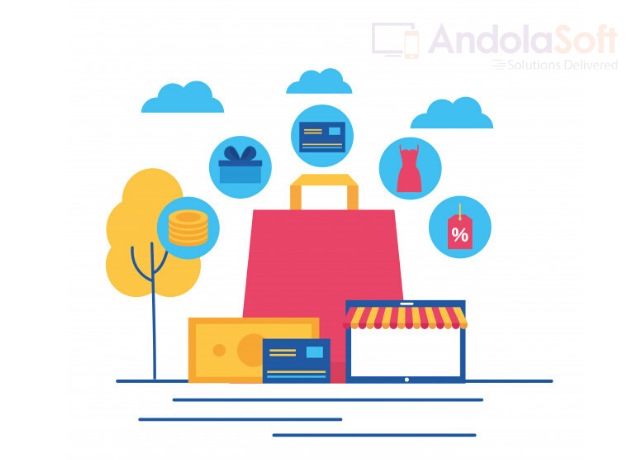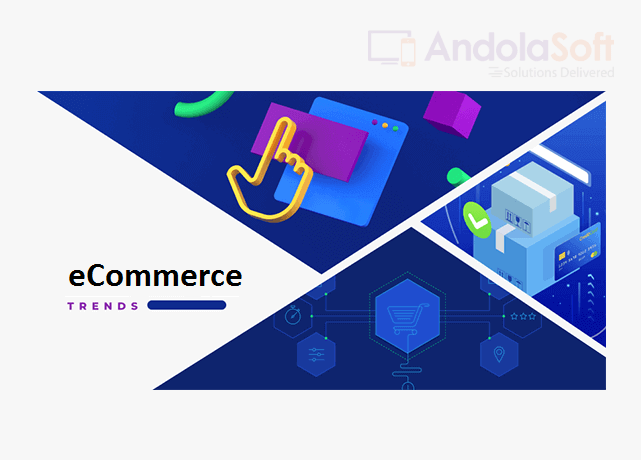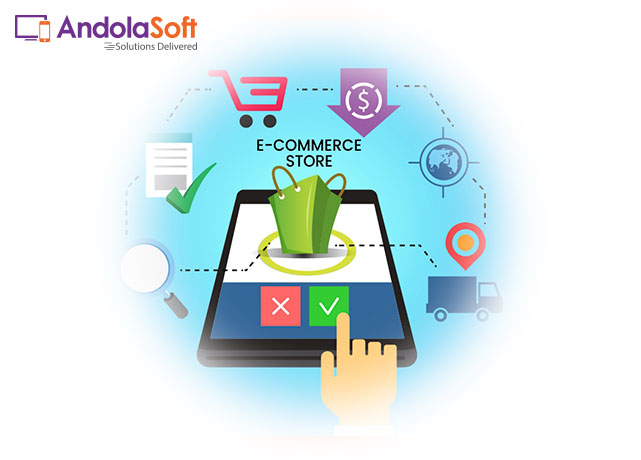eCommerce has been developing at the speed of light in the recent decade. Thousands of researchers, analysts, and marketers have been studying the holy grail of information – that’s a customer with a smartphone – and defining the strategies for more targeted and personalized marketing and products.
Today, many eCommerce businesses have tons of customer data needed to advance in the online marketplace. With data, as well as data analysis and intelligence tools and platforms, being readily available
They know exactly what their target customers need and want. For example, Amazon’s product recommendation engine generates 35 percent of the company’s net income of $10.07 billion.
In fact, those who have mastered customer research not only know your needs and preferences but also what you’ll need in the future.
This incredible opportunity, along with many other ones, was, of course, enabled by state-of-the-art eCommerce solutions that companies only dreamed about 10 years ago.
So what exactly drives eCommerce businesses’ obsession with data? What are the technologies that give them the competitive advantage they need to stand out in a multi-billion online marketplace?
-
Contents
Contents
Machine Learning Algorithms to Generate Personalized Product or Service Recommendations
The vast majority of online shoppers – 87 percent – start product searches online. Chances are you’re a part of this, too, if you rely on your smartphone to find new products. It makes perfect sense, as the experience of others can help to make a good choice.
Function of Beauty, an American fashion brand offering personalized hair-care, wants to take product research one step further. A customer looking for hair products such as shampoos and conditioners for their specific hair type doesn’t need to browse numerous websites and menu categories.
Instead, they can take a quiz on a brand’s website and receive a personalized recommendation.
 Source: Screenshot, Functionofbeauty(.)com
Source: Screenshot, Functionofbeauty(.)com
This was made possible by a machine learning algorithm. A customer can choose their hair type, scent, size of a bottle, and provide other preferences.
The results provided by a quiz taker are fed into the algorithm that pulls from hundreds of ingredients to generate a truly unique set of hair care products. In fact, it’s able to offer up to 12 million custom combinations.
Inc. reports that the quiz has been already taken by more than 1.5 million times. This is truly a great example of how machine learning can help to increase the personalization and relevance of products as well as advanced customer relationships.
Algorithms like these can be used to generate custom products, services, and recommendations, and therefore, will continue to drive eCommerce businesses’ effort to maximize relevancy for customers.
-
Chatbots to Improve the Overall Online Shopping Experience
Chatbots are one of the hottest topics in eCommerce right now.
These apps can mimic human online behavior such as conversations with pre-written questions and answers, so they have a lot of applications in the area.
In fact, here’s what eCommerce businesses expect from using them, as described in the 2018 State of Chatbots report.
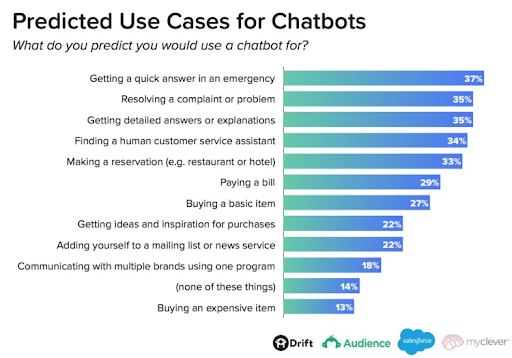 Source: The 2018 State of Chatbots report
Source: The 2018 State of Chatbots report
Already, a countless number of businesses have developed their own chatbots to help customers.
The range of their applications, as you can see, is pretty impressive, so it’s safe to claim that any eCommerce business can benefit from using one.
Let’s consider an example of a chatbot making a difference. A well-known U.S. electronics retailer Best Buy, for example, has an impressive Messenger chatbot that helps customers with:
-
- Finding products based on such criteria as price range, manufacturer, OS type, laptop type, and common applications (gaming, studying, etc.)
- Connecting to a customer support operator from an appropriate service department (this is determined by the answers given by the customer to the chatbot)
- Locating stores across the U.S., Canada, and Mexico
- Getting support like in-home consultations and other service-related inquiries.
Impressive, right? And all of this is available in one place. But the best thing that a lot of customers really appreciate is that they can get almost instant replies to their requests thanks to the chatbot technology.
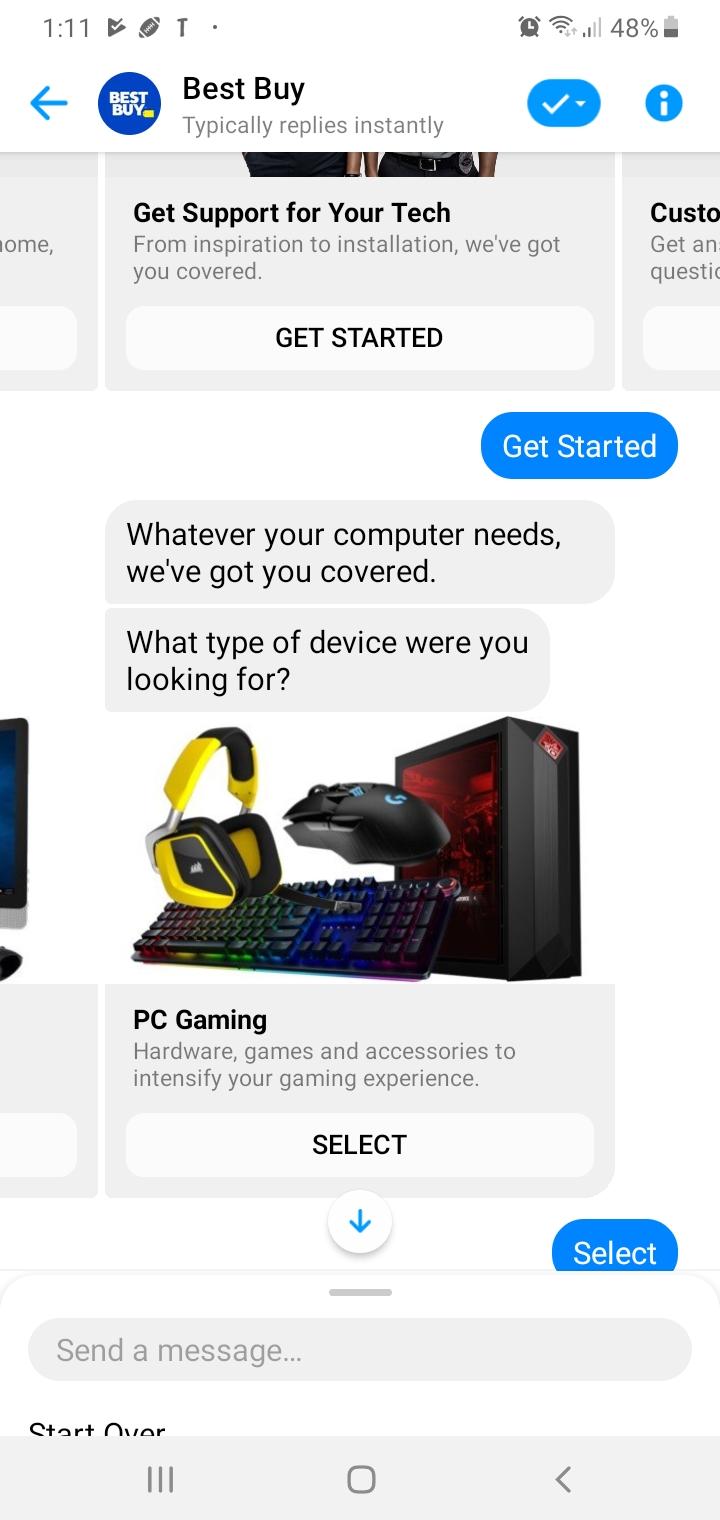
Chatbots like Best Buy’s can really improve the overall customer experience by increasing personalization and relevance of communication with brands.
Perhaps unsurprisingly, more and more people feel comfortable using them; in fact, one U.S. study found that 62 percent of online shoppers said they liked using a chatbot to communicate with a brand.
-
Hybrid eCommerce App Development
Apps continue to be a significant sales channel for eCommerce businesses around the world. In recent years, many companies have chosen to build hybrid apps, which combine the elements of web applications and native apps.
This means they’re built on CSS, HTML, or JavaScript, but use a device’s browser engine to render the HTML or JavaScript code locally.
This allows for more functions that aren’t accessible in native apps, such as local storage and accelerometer. Moreover, making an app hybrid also means that it:
-
- Gets downloaded to a device
- Functions regardless if the device is connected to the Internet
- Integrates with the devices’ file system to allow local storage
- Provides better access to dynamic online content
- Integrates with web services.
The first obvious advantage of hybrid apps that many customers appreciate is offline availability. If made possible by the developers, all of their features can work without an Internet connection.
For businesses looking to build an app, these advantages of hybrid mobile app development should be considered:
-
- Your app will work both online and offline
- Launching updates and patches will be easier for your web development team
- You’ll build the app faster, so if time to market is a priority, hybrid apps are a great choice
- You’ll reduce the costs because there’s no need to build multiple versions of a native app for different platforms (Android and iOS, etc.)
-
Innovative Experiences with 3D Imaging, Augmented Reality (AR), and Virtual Reality (VR)
Attracting customers to product pages is one of the biggest goals in eCommerce. Product imagery and video play a deciding role in conversions; in fact, the State of Video Marketing 2019 report found that up to 96 percent of online shoppers say they’ve watched an explainer video to learn more about a product or service.
No surprise a lot of eCommerce brands have been learning how to improve product imagery and product pages as a whole.
Technology is the answer here, too, as it can help to advance customer experience with product pages with innovative imagery and video delivered by AR and VR.
Yes, we as customers were once quite happy with conventional product images. We’re not anymore, so businesses have to use technology to win over us.
Using the above-mentioned technologies is indeed a great way to create an immersive, 360-degree shopping experience for online shoppers.
For example, a U.S.-based travel bags and accessories seller Samsonite is one of the companies leading the revolution of product imagery with 3D visualizations to improve customer experience.
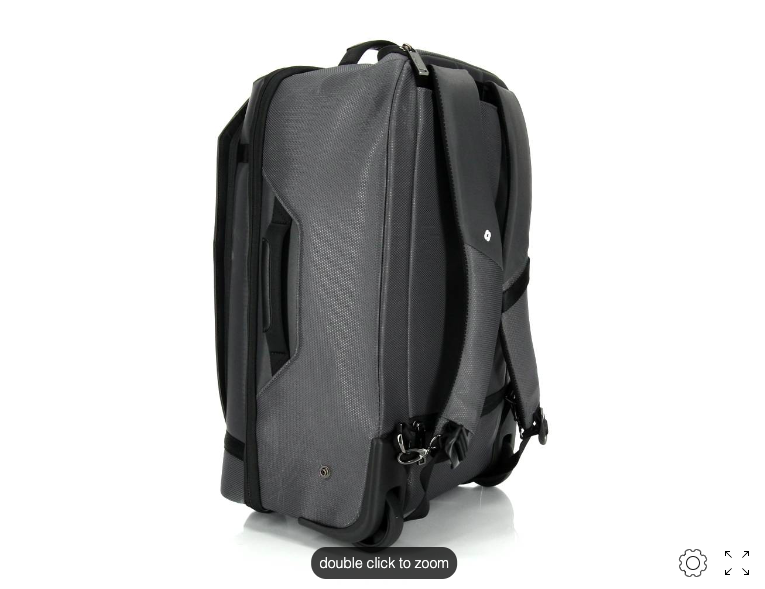 Source: Samsonite 3D Product Viewer, Samsonite(.)com
Source: Samsonite 3D Product Viewer, Samsonite(.)com
“It is important for our customers to have the opportunity to examine the goods in detail, and 3D visualization allows us to bridge the gap between online shopping and brick-and-mortar stores,” Business Wire quoted Jay Nigreli, VP of eCommerce at Samsonite, as saying.
Indeed, customers visiting eCommerce websites that offer this experience have a great chance to get a better sense of a product’s materials, shape, and dimensions.
The technologies could be especially relevant for companies selling small products like jewelry, so we expect them to adopt 3D, AR, and VR in the future.
Exciting Times Ahead
Without a doubt, the next several years will be transformational for eCommerce technology. As technology continues to redefine the rules of customer engagement, many new approaches, as well as exciting possibilities, emerge to help businesses stand out from the ever-increasing competition.
The points you’ve just read are among the biggest technology trends impacting eCommerce at the moment, and it’s clear that they will become more widely adopted, as more and more businesses are looking for opportunities to gain competitive advantage.

